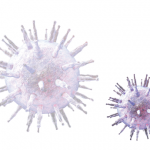“Despite the fact that these individuals did not fulfill the criteria of RA, they had ongoing processes that could lead to disease development,” Dr. Rantapää-Dahlqvist said. Individuals who did develop RA had a higher frequency of the human leucocyte antigen–shared epitope (HLA-SE) than their healthy relatives, and those who both smoked and had HLA-SE were significantly more likely to test positive for anti-CCP and rheumatoid factor.
Recent findings also show that, within two to four months of RA onset, patients will show a decrease in galactose levels as well as total IgG levels, Dr. Rantapää-Dahlqvist said. Another key autoantibody predicting RA onset may be anti–PAD-4; about 18.1% of patients test positive for it around five years prior to diagnosis, she added. Future research must clarify the role of all of these autoantibodies in the transition from autoimmunity to developing RA, she concluded. She believes that more data on first-degree relatives’ genetic makeup and smoking habits may provide key clues.
Epstein-Barr and Lupus
Lupus is another autoimmune disease whose preclinical clues are now being identified. Lupus is a “smorgasbord of clinical manifestations,” first written about by the ACR in 1972 to widespread ridicule, said John Harley, MD, PhD, director of rheumatology at Cincinnati Children’s Hospital. Later, identification of key genetic markers in SLE patients validated the findings. “The symptoms are unified by autoantibodies,” about 50 autoantibodies that SLE patients have in abundance, he said. “People with lupus come to the table with their own complement of risk or genetic predisposition, and then the environment comes into play.”
To identify who is at high risk of developing lupus before symptoms occur, researchers looked at the lupus patients and controls drawn from a U.S. Department of Defense repository that now contains over 40,000,000 serum samples and found key autoantibodies in patients who developed SLE five years later, Dr. Harley said. These patients developed autoantibodies and then had an asymptomatic period followed by typical lupus onset. Rheumatoid factor was associated with patients who developed arthritis, and anti-C1q and anti-dsDNA were associated with later renal disease, he noted. Another interesting finding was that about half of the African-American males who developed SLE had renal disease at the time of diagnosis and an increase in anti-dsDNA titer prior to disease onset. “The evidence is powerful that certain autoantibodies are needed for a particular disease expression,” Dr. Harley said.
In SLE, there is a reinforcing circle of autoimmune destruction, Dr. Harley said. Patients wind up with a life-threatening illness before treatments change its trajectory. Even a course of corticosteroids may alter the patient’s experience, he said. “Maybe if we could go back to the beginning and see what is happening, to the moment where they develop their first autoantibody, then we would understand the disease in a way that would empower us to be much more effective with our therapies.” Studies show that important preclinical markers of SLE that are the first to appear include anti–60kD-Ro, anti-dsDNA, and anti–nRNP-A. Over time, other autoantibody specificities accumulate in these patients, Dr. Harley added.



